The Android system recovery mode is a great feature for all android users. It enables users to fix different types of android phone issues easily and conveniently, even without the help of a professional. For instance, the Android recovery mode is beneficial in rescuing a frozen phone caused by misconfigurations.
However, many Android phone users have complained that the Android system recovery mode fails to work effectively. This article will guide you on all you need to know regarding android system restoration and how to fix recovery Android related issues.
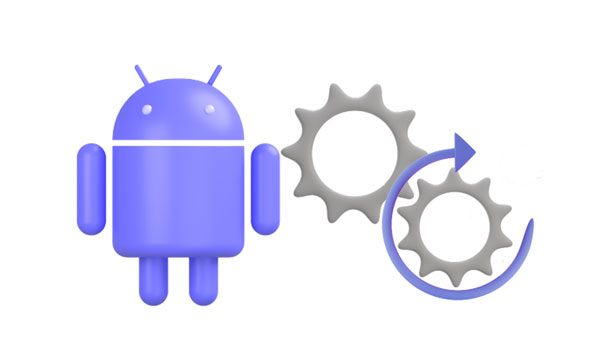
Android system recovery mode is an Android system utility used to fix malfunctioning situations in an Android phone, such as freezing and stuck screens, malware effects, and reduced device performance. The recovery mode has several options to help you troubleshoot issues affecting your Android phone. Below are some of the Android recovery modes.
1. The "Reboot System" Option
If you're looking for a way to restart your device, the "Reboot system" option is what you need. It's simple, tap on it, and your device will be ready for use in normal mode. This selection should be used when all your recovery tasks are complete so that you can continue with everyday activities seamlessly.
2. The "Reboot to Bootloader" Option
If your mobile phone has a "Reboot to bootloader" option within its recovery settings, you can take advantage of this feature and swiftly boot your device into bootloader mode. Unlike regular or recovery mode, bootloader mode provides the capability to flash different files with the help of ADB and other software. Unlocking your phone's bootloader is a breeze with this particular mode.
3. The "Apply Updates from ADB" Option
Do you have a ZIP of the system update files on your PC? If yes, you can use recovery's Apply update from the ADB feature to install it onto your phone successfully. To install the files on your device, you must have Android Debug Bridge (ADB) installed on the computer. Once complete, use this feature to transfer and successfully set up the file!
4. The "Apply Updates from the SD card" Option
With the "Apply update from SD card" option, you can easily access system updates on your phone's external storage. Download the system update files onto your SD card and select this option to install it. Just as simple as that!
5. The "Wipe data or factory reset" option
The "factory reset/wipe data" option is perfect for resetting your device to its original settings. Even if it's impossible to fully power on or turn off the phone, then entering into recovery mode and utilizing this choice will wipe away everything that was saved onto the device!
6. The "Wipe the Cache Partition" Option
Wiping the cache partition is an easy and efficient method to delete all your stored cache files with a few clicks. If you're ever facing issues with the system's cache, this could be the thing that will get it working again. You are just a tap away from enjoying having your phone run like new!
7. The "Mount/System" Option
By default, the option to Mount/System isn't included in most recovery systems. However, if you come across it on your own system, use it to access and alter the essential files in your device's storage. This is a must-have Android recovery mode option for anyone looking for more control over their phone's core system settings!
8. The "View Recovery Logs" Option
As its title suggests, View recovery logs provide an in-depth look at the records created from your activities when you are in Recovery Mode. Check out this log file to determine exactly when you should reset your device information.
9. The "Power off" Option
When you're done doing something while in recovery mode, choosing "Reboot system now" and "Power off" present two distinct options. The latter will turn your phone off without turning it back on. Given that you don't want to return to normal mode immediately, this is a great option!
1. Force Restart Your Android Device
If you can't restart your Android phone normally, don't despair! Use the recovery mode to reboot the system and fix any software issues on the device. For instance, if the phone is too slow, safe mode won't turn off, or applications keep crashing.
2. Clearing Cache Files
Given that you're dealing with some problems on your Android device and were asked to delete cache files, then using recovery mode to erase the partition of your device cache is a wise idea. This choice erases all your cached data from your device quickly and efficiently so that you can get back to optimal performance in no time!
3. Resetting Your Android Phone
Have you ever experienced a frustrating moment where your phone won't turn on, no matter how many times you press the power button? If so, don't worry! You can make use of the recovery mode to restore your device and start from scratch. In only a few steps, you'll be able to reset everything, including all your data, configurations, and settings. This will give your phone a fresh reboot to function properly.
4. Installing Update Files
Have you ever experienced the difficulty of attempting to update your phone with ZIP files? Worry no more! Applying Updates from ADB's Recovery Mode makes it simple. It takes the ZIP files as input and securely installs them on your device the way they should, saving you loads of time and hassle.
5. Flashing the Custom ROM
If you're a tech enthusiast who enjoys personalizing your phone, then flashing different ROMs is right up your alley! Recovery mode lets you flash various custom ROMs with just the push of a button.
Read also: Is Touch Screen Not Working on Samsung Phones or Tablets? Repair It Now
Achieving recovery mode on two distinct Android phones can be unique, so it is important to discover the combination of keys that works best with your device. For further assistance, check out these instructions for entering recovery mode using some of the most popular Android devices!
Rebooting a Pixel or Google Nexus phone into Android recovery mode is simple. If you're looking to access recovery mode on your Google Pixel, the first step is getting into the bootloader mode. Follow the below steps to reboot your Google Phone into recovery mode.
Step 1: Switch off the device.
Step 2: Press as you hold the "Power" and "Volume Down" buttons.
Step 3: Select the Android recovery mode of your choice using the volume keys and press the "Power" button. Then the device will be in recovery mode.
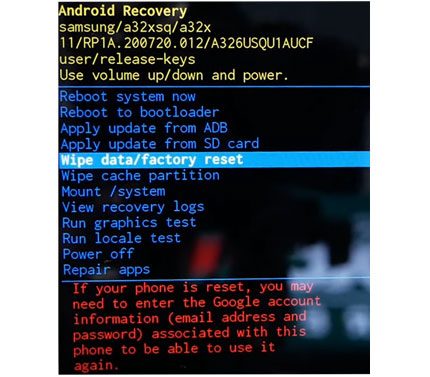
Step 1: Power off the ZTE Mobile, and hold the "Power" and "Volume Up" button.
Step 2: When you see the "Android Logo" or "ZTE logo", release the buttons.
Step 3: You can now see the ZTE recovery mode.
Step 4: Use the "Volume" buttons to move and the "Power" buttons to select your preferred option.
Getting your Samsung phone into recovery mode is simple. Just remember the key combination for your model, and you'll be able to access this essential function in a snap!
Step 1: Connect your Samsung phone to a computer via a USB cable, and press the "Volume Down" and "Side" buttons to turn off the phone.
Step 2: Mow, press, and hold the "Side" and "Volume Up" keys simultaneously for a while. Then the Samsung logo will show up on the screen, and you can release the buttons. Your Samsung phone will be at recovery mode.
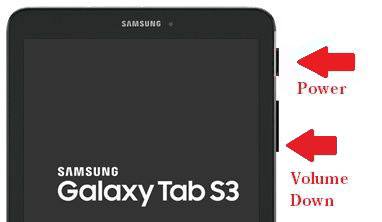
Unlocking your Motorola phone's full potential is easy when you boot into the bootloader mode and select recovery. To help make this process simpler, here are some instructions on how to get started.
Step 1: Turn off the Motorola device, and press while holding the "Power" and "Volume Down" buttons simultaneously.
Step 2: Choose "Recovery" by using the "Volume Down" key, and tap the "Power" key to confirm the operation.
Step 3: While the Android logo appears, please hit the "Volume Up" and "Power" buttons. Now, your gadget is in Android system mode.
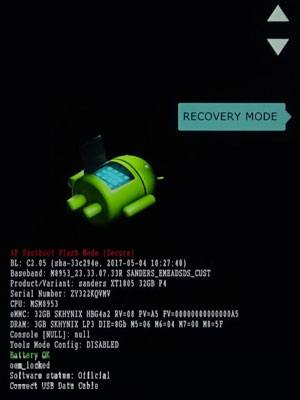
Read more: How can you fix the black screen on an Android phone or tablet? Actually, it is not difficult. You can read this article to get the solution.
If you own an HTC device, disabling Fastboot will allow you to access recovery mode with just a few simple steps. It's easy and worth the effort for all the potential benefits of entering recovery mode!
Step 1: Power off the HTC phone by tapping and holding the "Power" key for some seconds.
Step 2: Hold while pressing the "Power" and "Volume Down" buttons simultaneously.
Step 3: Choose the recovery mode. Then your device is in recovery mode.
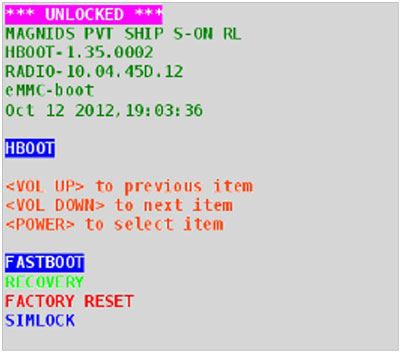
Further reading: WhatsApp Backup Stuck on Your Android or iOS Device? Safe and Effective Fixes
As you have seen, the Android system recovery mode feature has many advantages. However, at times you might get stuck in Android reboot recovery, unable to do anything with your device. In that case, all you need to do is fix the problem with the help of a reliable tool like Android Repair.
It is a professional program that works on most Android Samsung models, including the latest Samsung mobile devices, and can help you recover your device when stuck in Android recovery mode. Also, it can solve other system issues on Android devices, like the Android blue screen.
- Fix different system problems on Android devices, such as the Android system recovery 3e error.
- You do not require any technical skills to fix your phone to normal.
- It has a high success rate of fixing system problems.
- Fix Android app crashing, black screen, and more.
- Support most Samsung models.
Download the software to fix your Android phone.
Step 1. Install the Android Repair Software
Install the repair software and launch it after downloading it on your computer. Click on the "System Repair" option and connect the Android phone to your computer and click on the "Android Repair" option from the available options. Then click "Start" to go on.
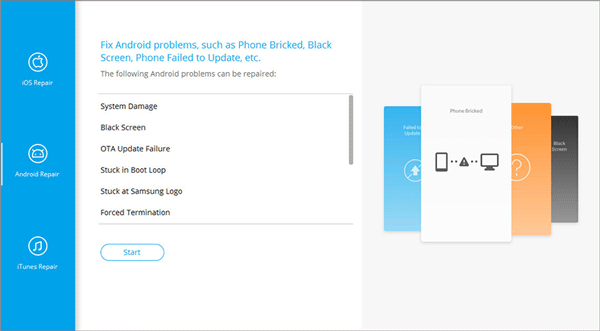
Step 2. Select Correct Model
- Select the correct device model, country/region, carrier details, and name on the device information screen and click on the "Next" button. Then enter "000000" to the blank and tap "Confirm".
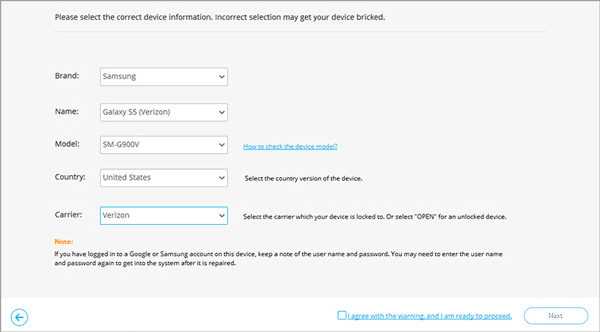
- To ensure a successful Android repair, it is essential to start your device in Download mode. To do so, simply follow the easy steps on the interface.
Step 3: Fix Your Phone
After that, the software will download the firmware and repair your phone automatically.
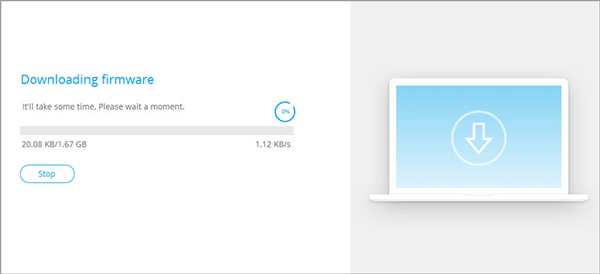
Android system recovery mode is an important feature for Android phones that can help you fix most Android-related problems. However, if your Android device gets stuck on Android recovery mode, don't worry! There are solutions available to get your Android device out of this situation. Android Repair is a reliable Android repair software that can help you fix your device when stuck in Android recovery mode without any technical knowledge.
Related Articles
How to Get Out of Android Recovery Mode | Ultimate Solutions
Fantastic Android SMS Recovery Apps | Easily Recover Deleted Texts from Android
My Text Messages Disappeared on My Android - Find the Cause and Fix It
How to Work Out the iPhone Transferring Data Stuck Issue [Easy and Reliable]
Samsung Smart Switch Stuck at 99% Problem: How to Fix? (Proven Tips)
Easily Recover Data from Phone with Black Screen | Android Recovery Tutorial
Copyright © samsung-messages-backup.com All Rights Reserved.